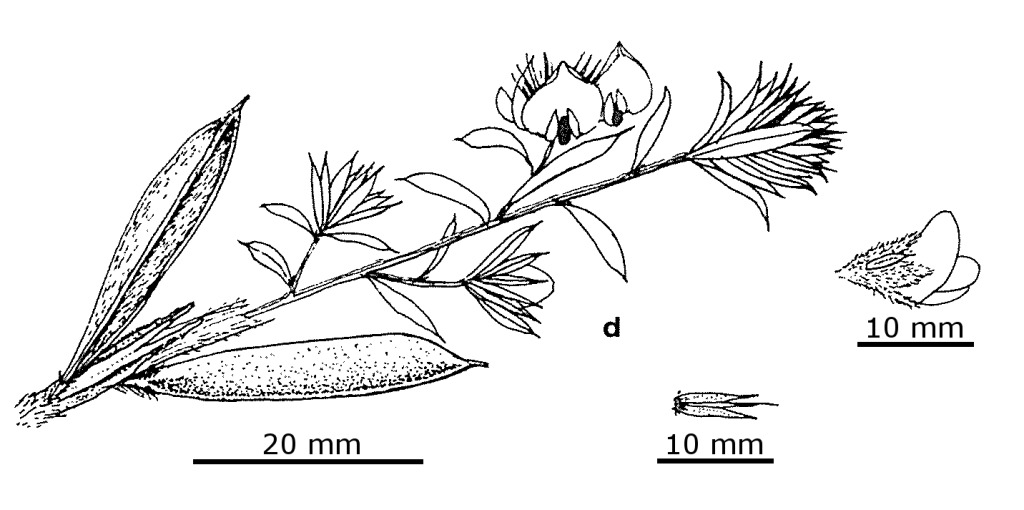Pultenaea sericea
(Benth.) Corrick Chaffy Bush-peaLax, procumbent subshrub; branches 10–40 cm long; stems terete, finely ridged and with pale, appressed hairs when young. Leaves alternate, linear to elliptic, convex or occasionally flat, 6–25 mm long, 1–3 mm wide; apex acute but not pungent; upper surface glabrous, darker than lower; lower surface with pale, appressed hairs; margin recurved; stipules 6–10 mm long, pale and membranous, appressed to stem and united for c. three-quarters their length. Inflorescence a terminal head-like cluster of 8–14 flowers; bracts 6–11 mm long, longer than calyx, apex with long hair-like central lobe; calyx 5–8 mm long, covered with pale appressed hairs; bracteoles attached 2–3 mm above base of calyx tube, elliptic, 3.5–5 mm long, distinctly keeled, narrowing abruptly into a slender, mucronate tip, hairy at base; standard 7–8 mm wide; ovary and base of style hairy. Pod flat, lower half enclosed by calyx. Flowers Oct.–Nov.
VVP, GipP, CVU, DunT, EGL, EGU, WPro, HSF, Strz. Also NSW, Tas. Scattered in near-coastal areas mainly east of Melbourne, formerly common in heathlands around Port Phillip Bay. Occurs in seasonally wet heathland and margins of swamps.
Corrick, M.G. (1996). Pultenaea. In: Walsh, N.G.; Entwisle, T.J., Flora of Victoria Vol. 3, Dicotyledons Winteraceae to Myrtaceae, pp. 765–793. Inkata Press, Melbourne.
 Spinning
Spinning
